Organization
The Decentralized Autonomous Organization Logistic Green Label is a non-profit organisation, democratically managed by all interested parties.
Structure
The Decentralized Autonomous Organization Logistic Green Label is structured as follows:

The Advisory teams have the role of proposing the strategies and operating rules of the Logistic Green Label to the decision-making body.
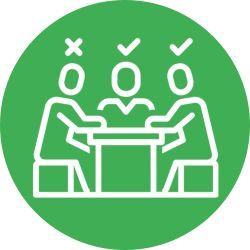
The Decision body is represented by the DAO itself. Voting takes place through a democratic process in which each participant expresses their preferences whose weight on the final decision is proportional to the quantity of tokens owned. Tokens are distributed based on pre-established and transparent rules.

The Steering Committee, made up of 9 members, coordinated by the general secretary, elected by the members of the DAO. This committee has the task of proposing the strategic vision of the DAO to the decision-making body and managing its implementation
Since the project has an international scope, the official documents and communications are written in English. To facilitate communication activities, translations into the main international languages are provided.
For more information on the technical management of the DAO visit the page DAO - Technical instructions
Advisory Teams
The advisory teams are as follows:

Transport

Packaging
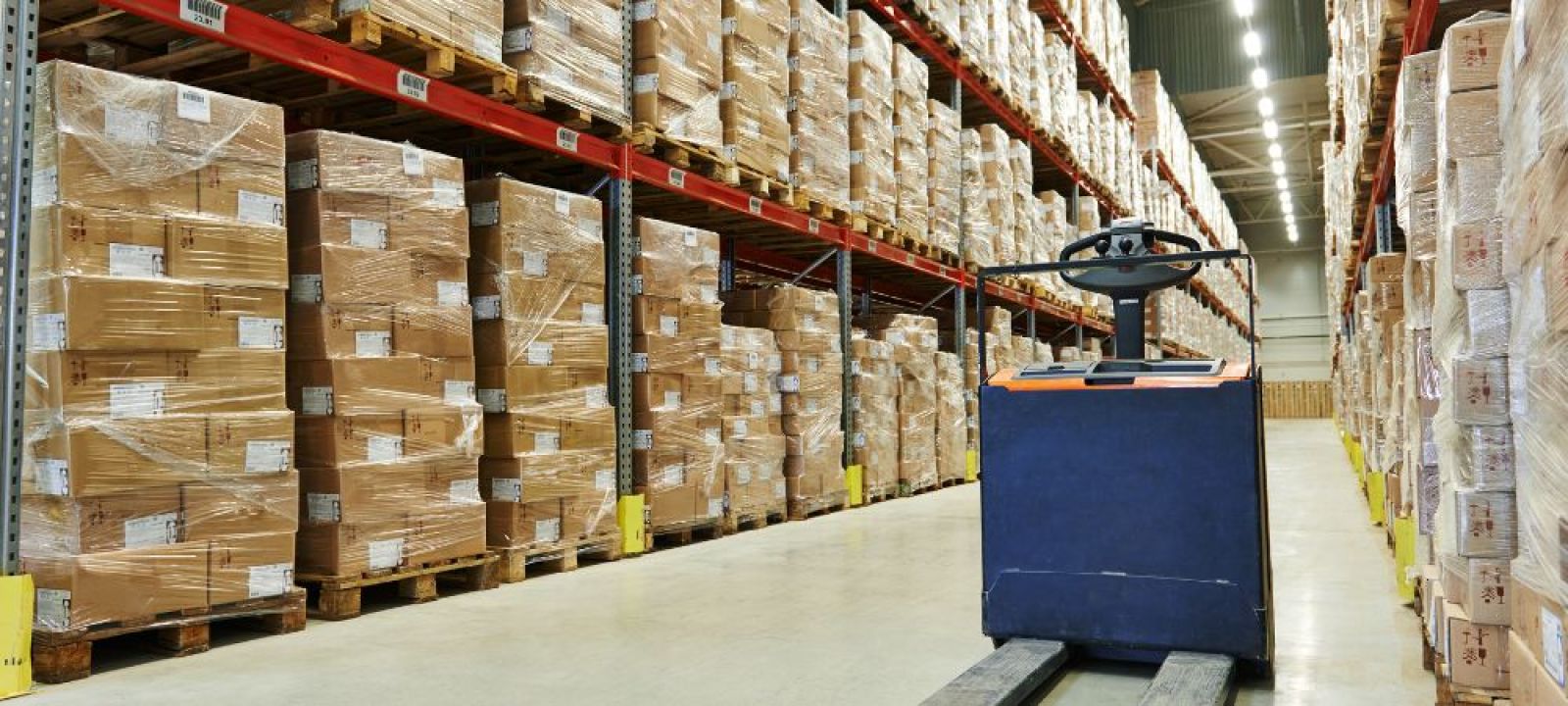
Warehousing

Compensation
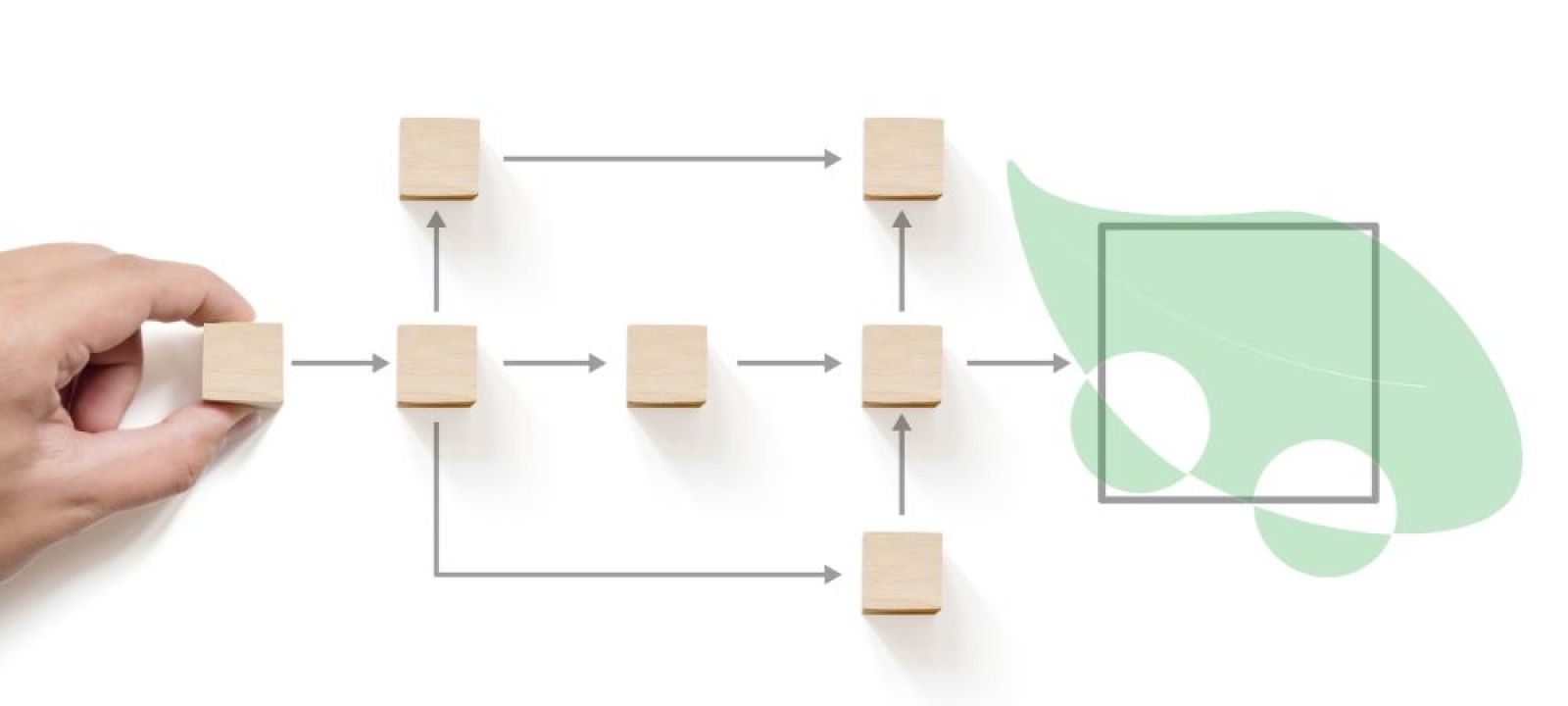
Standard

Communication
Distribution of governance tokens
General principles
-
Decisions are made by DAO members by simple majority (>50% of voting tokens). The governance tokens initially distributed are 1000 GGL (Governance Green Label).
-
Wide participation in the DAO of all interested parties is hoped for, both in the propositional and decision-making phases.
-
The founders established how many tokens to initially distribute and with what weights to represent various categories of users.
-
At the end of the initial distribution, the DAO itself will be able to define any changes to the decision-making principles, such as the creation of new tokens to allow the entry of new members, or the attribution of different decision-making weights to the different categories of users.
Representation of interested parties
| Representation | GGL token | Weight % |
|---|---|---|
environmental associations representing the natural environment | 100 GGL | 10,00% |
consumer associations | 100 GGL | 10,00% |
users of logistics services (individual commercial companies and marketplaces) | 100 GGL | 10,00% |
logistics operators (warehousing and transport of goods) | 100 GGL | 10,00% |
operators in the packaging sector | 100 GGL | 10,00% |
manufacturers of vehicles for transporting goods and technical equipment | 100 GGL | 10,00% |
logistics service companies | 100 GGL | 10,00% |
universities, research institutions and individual experts | 100 GGL | 10,00% |
innovative startups | 100 GGL | 10,00% |
other subjects strategic for the project | 100 GGL | 10,00% |
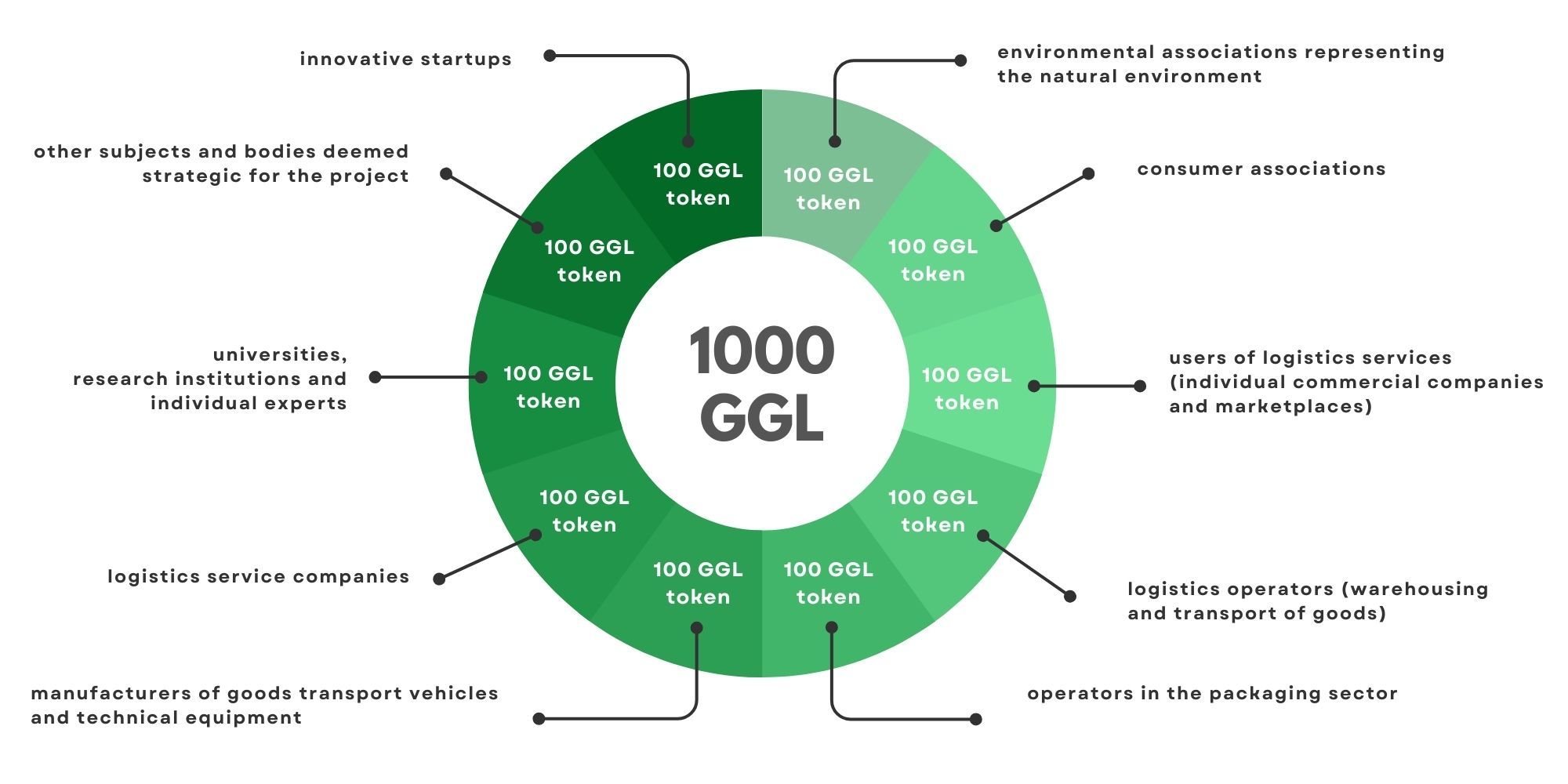
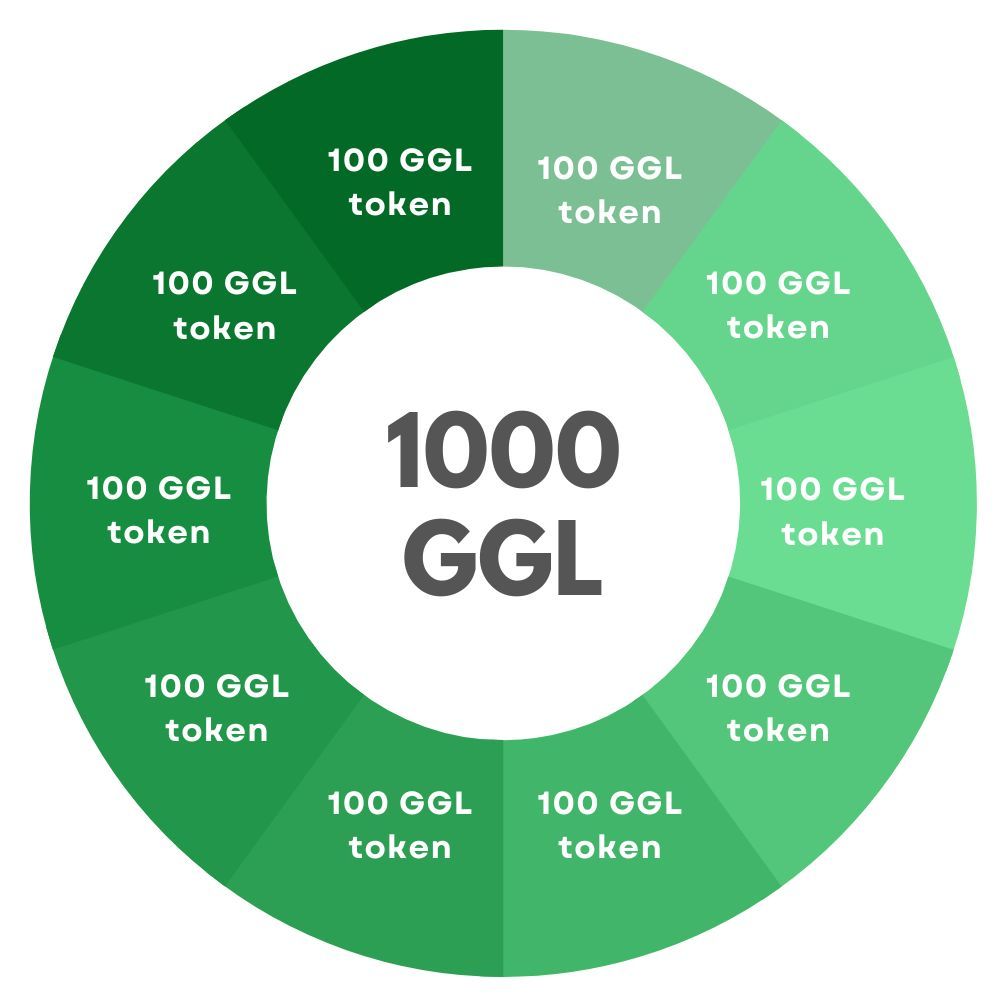
-
Micro businesses, individual experts1 GGL
Micro businesses are considered to be businesses with up to 10 employees or with a turnover of less than 2 million euros
-
Small/Medium sized businesses, associations of local importance5 GGL
Small/Medium sized businesses are considered to be Businesses with up to 249 employees or a turnover of less than 50 million euros
-
Big business, associations of national or international importance, universities10 GGL
Big businesses are considered to be businesses with over 250 employees or a turnover exceeding 50 million euros


